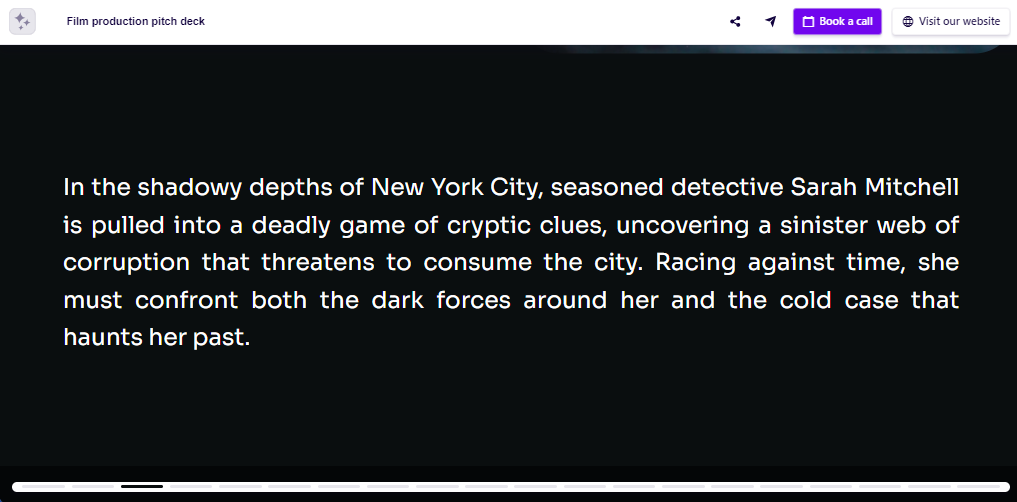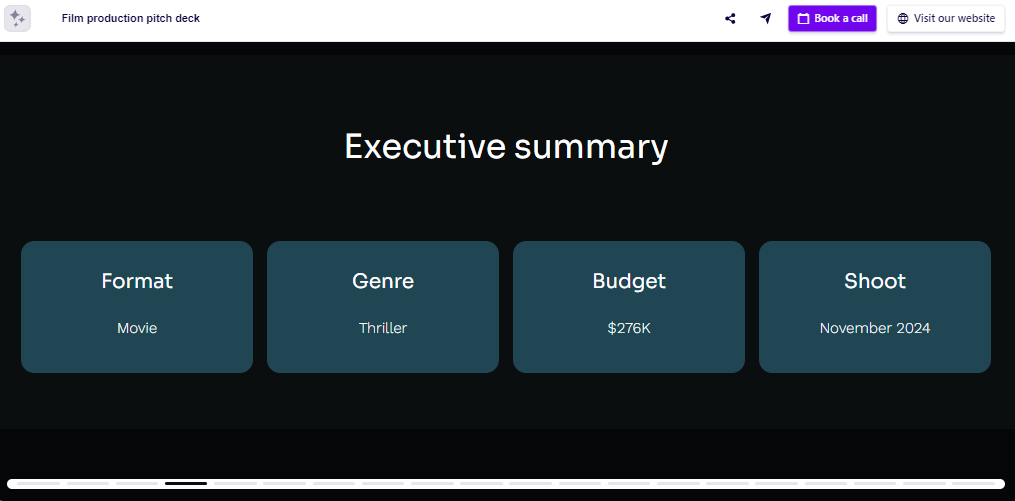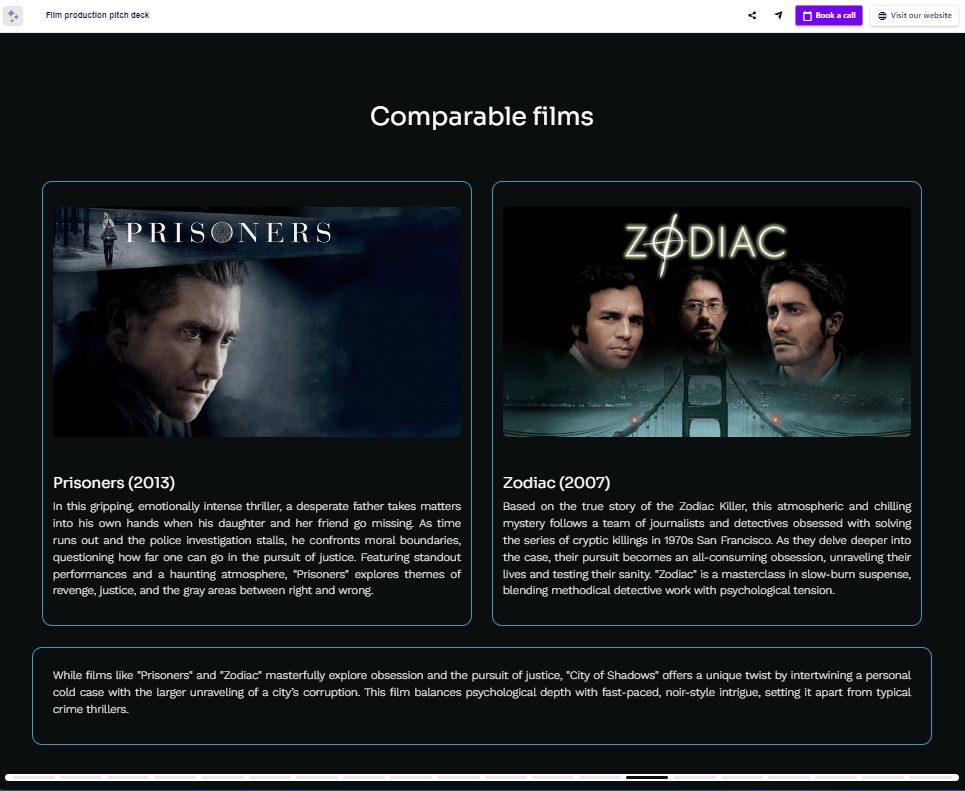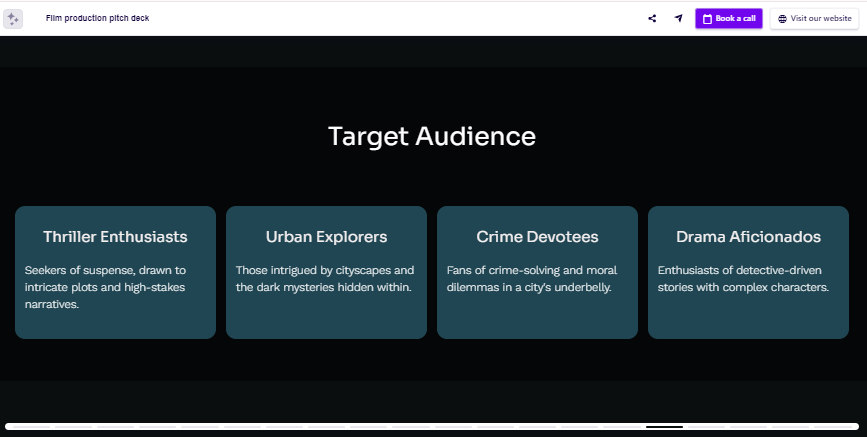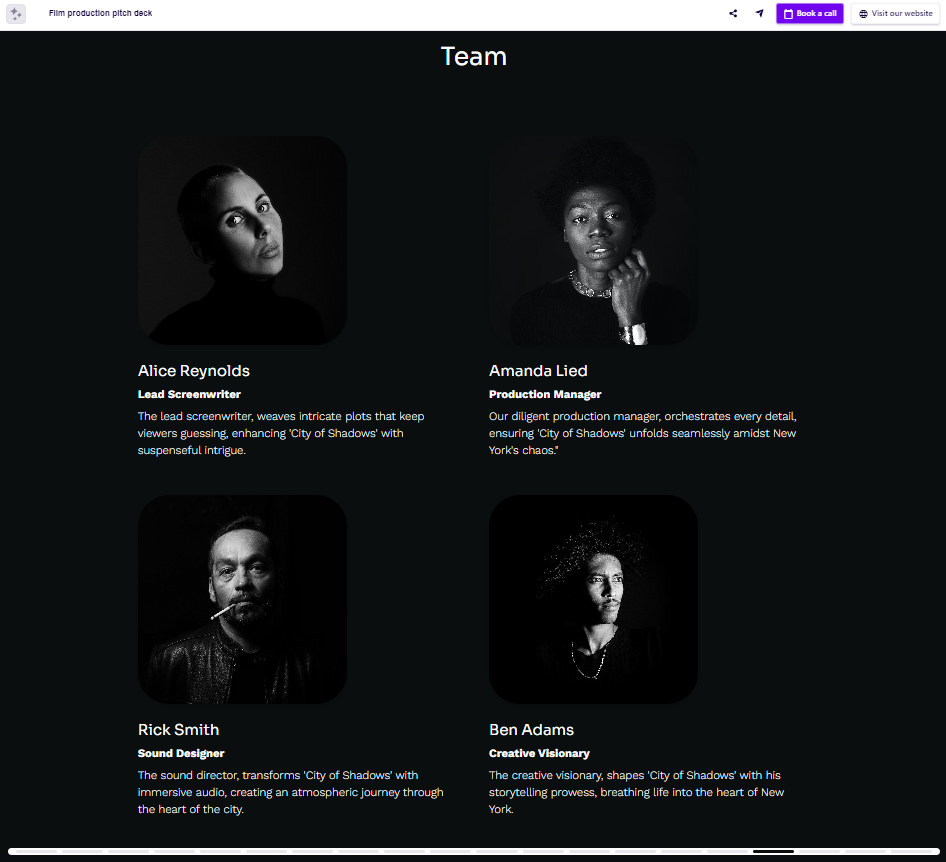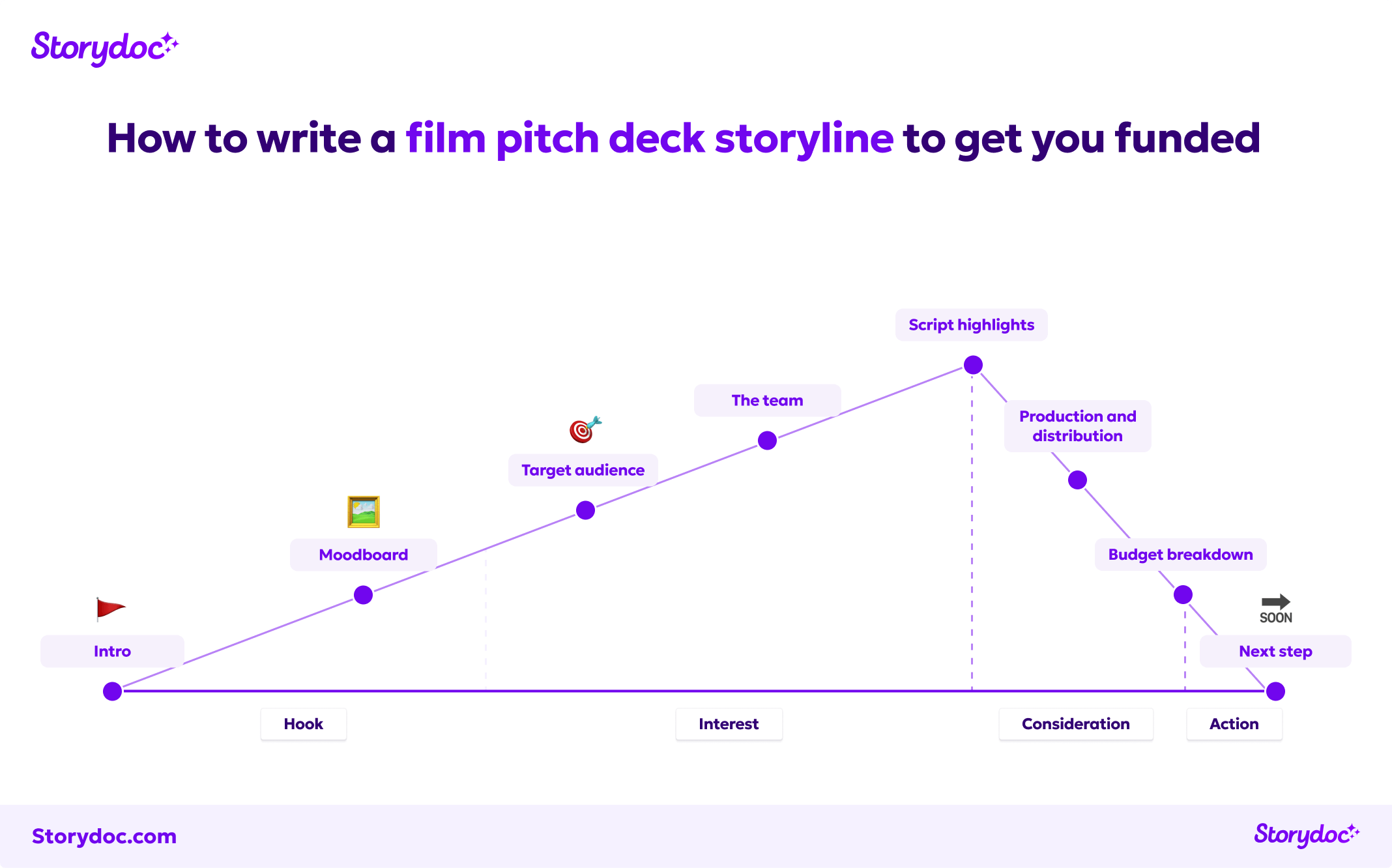Tips on how to create a film pitch deck
Now that you know how to create each slide of your film pitch deck, it's time to go over some practical tips to help you along the way.
From structuring your deck like a story to personalizing it to different audiences, these tips will help your pitch stand out and resonate with those who have the power to turn your cinematic dreams into reality.
1) Dive deep into your project
Before anything else, immerse yourself completely in your project. Understand every nuance of your story, from the overarching themes to the minute details of your characters and settings.
This depth of knowledge will lend authenticity and richness to your pitch, making it more compelling.
2) Conduct thorough research
Begin with extensive research. Look into similar films or shows, market trends, and audience preferences.
This step is crucial not just for understanding your competition but also for identifying gaps your project can fill, and trends it can capitalize on.
3) Create a narrative flow
Your pitch deck should narratively unfold like your film would. Start by setting the scene, introduce the main characters, outline the conflict, and give a sense of the journey and resolution.
This flow helps your audience visualize the film and connect with its story.
Here's our recommended pitch deck storyline:









